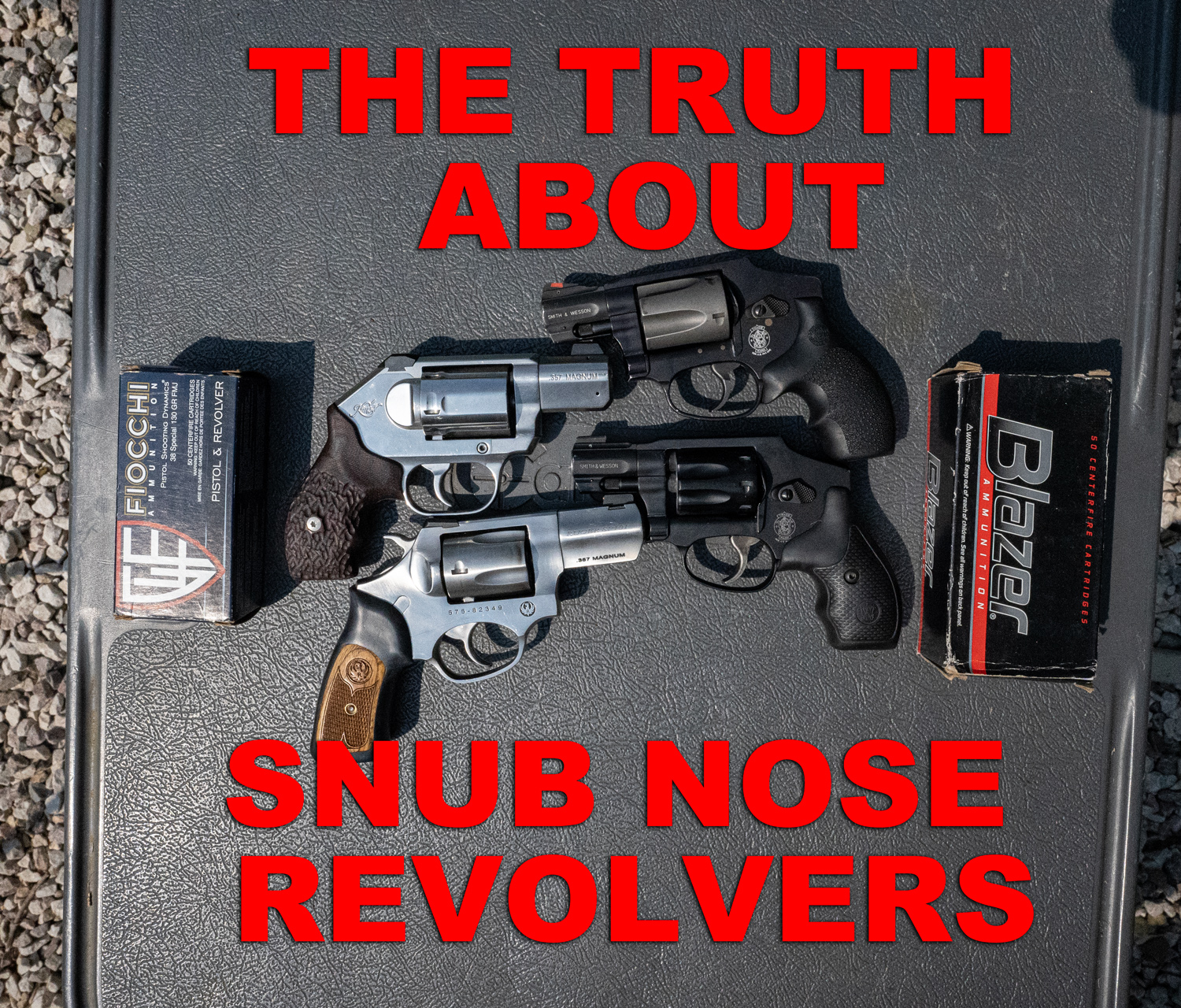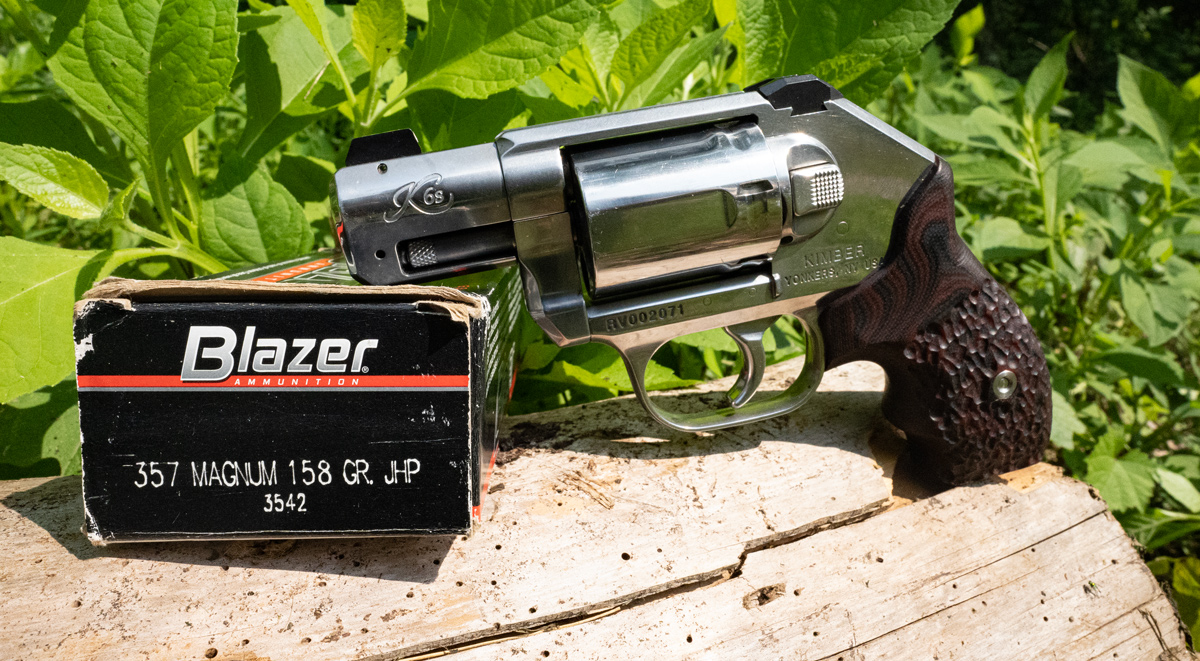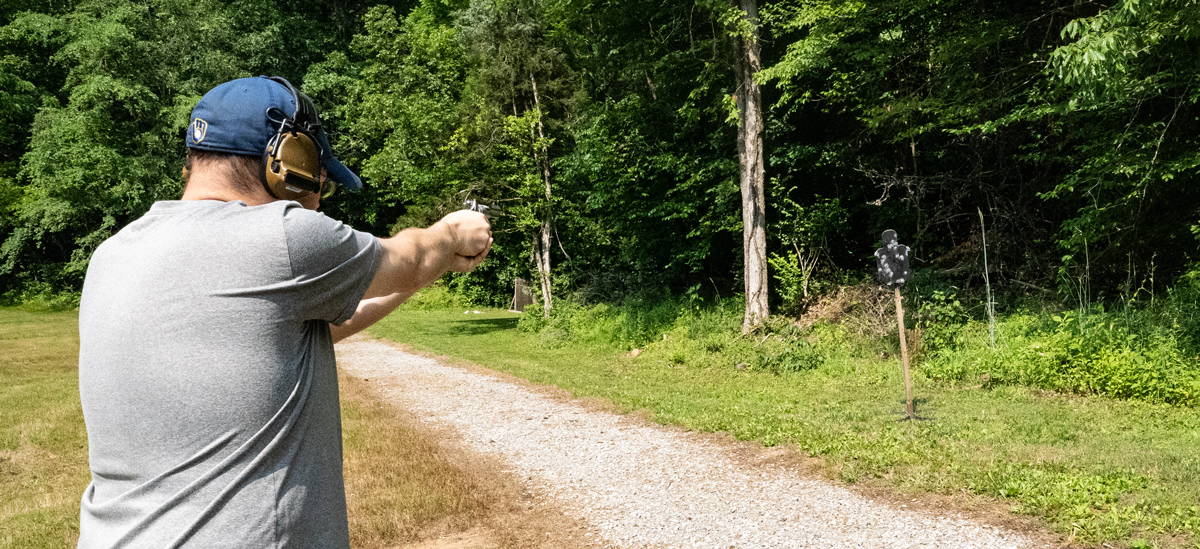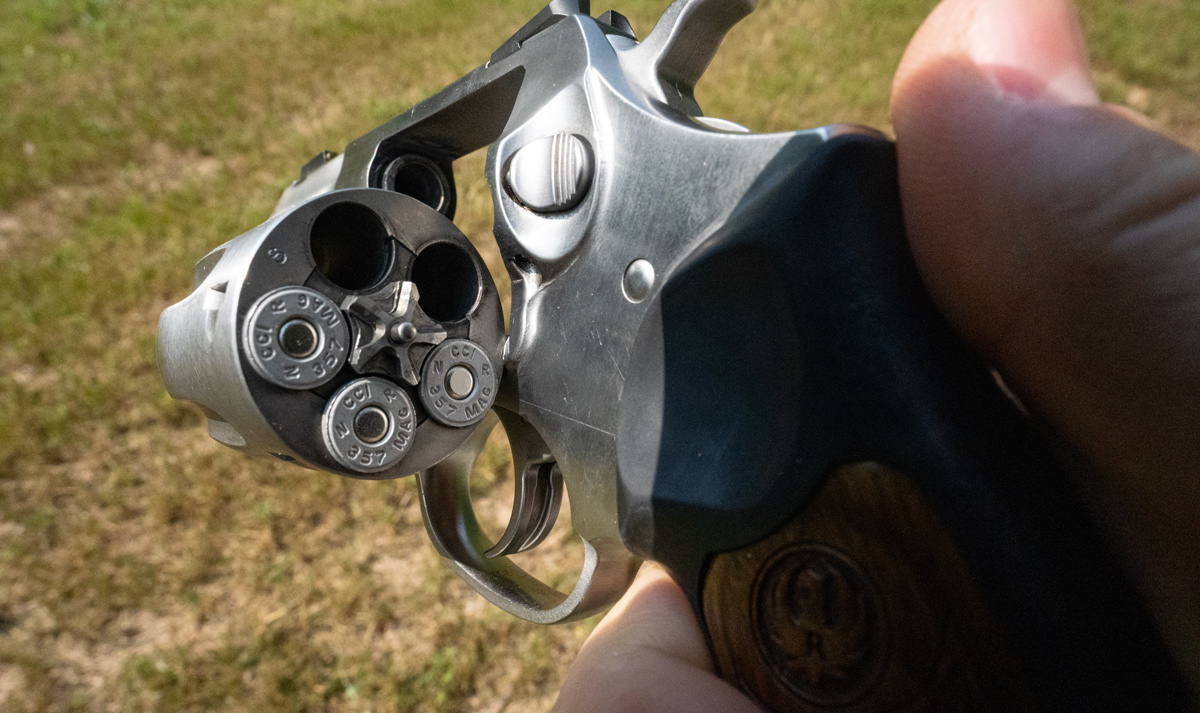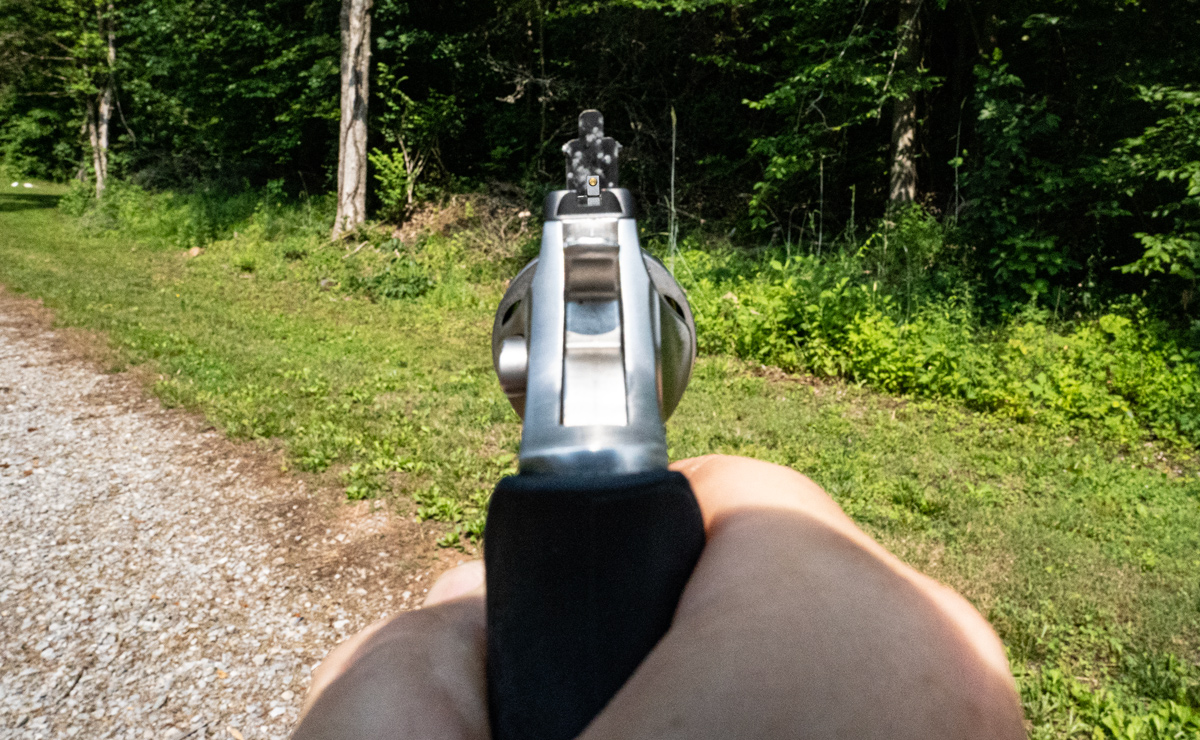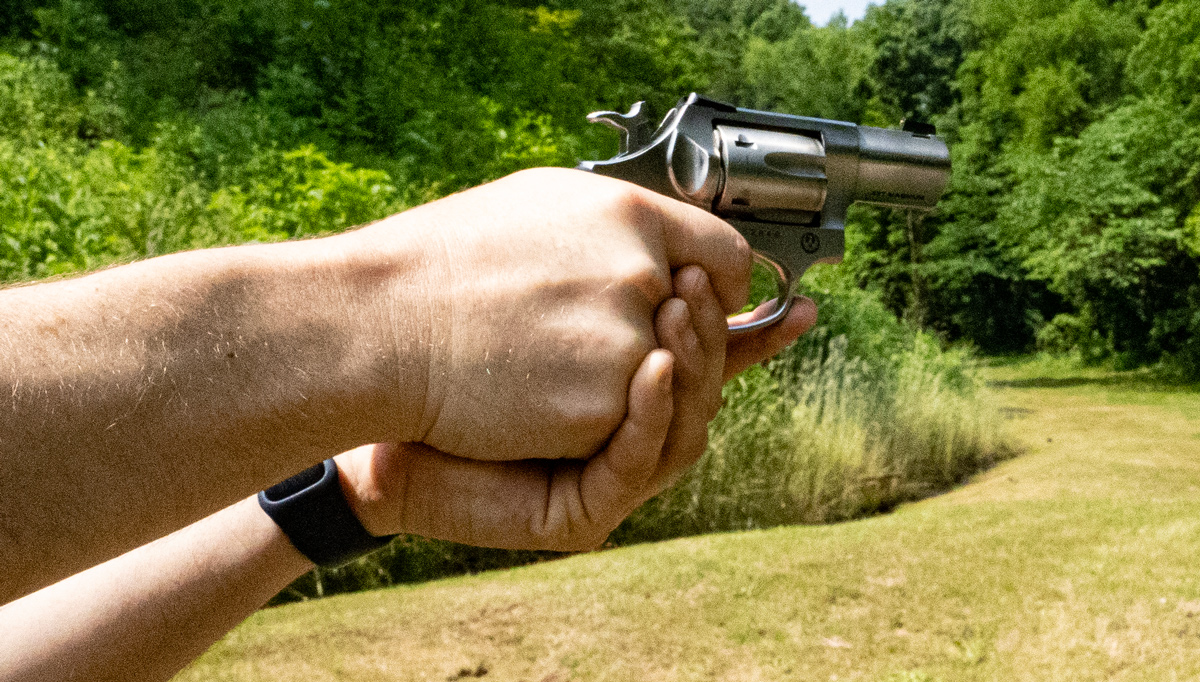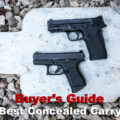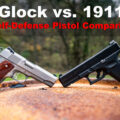A look at snub nose revolvers, their advantages as well as their inherent disadvantages due to their light weight and small size.
Although semi-automatic pistols seem to be the darlings of the gun world, there are still plenty of shooters who prefer a good, old-fashioned wheel gun. The traditional revolver is sturdy, simple, easy to use, and easy to maintain. Pick any of the fine snub nose revolvers out there today and you’ll get an easily concealable self-defense tool that can be tough to beat… but also tough to shoot well.
A snub nose revolver is not your average, everyday revolver. Super compact, and insanely reliable, these cute little bulldogs are not weapons for the faint of heart.
If you’re considering buying a snub nose, there are a few things you should know before you commit.
What is a Snub Nose Revolver?
A snub nose revolver is any revolver with a short barrel. Most guns that fall into this category have barrels that are shorter than 3 inches. Two to two and a half inches is the most common barrel length. Basically, a snubbie is any revolver that is easy to conceal.
Snubbies have been around for quite some time. Samuel Colt applied for the first wheel gun patent in 1836. His design incorporated a revolving cylinder that shooters had to load both powder and bullets into.
Colt was also responsible for developing the first snub nose revolver, the Colt Single Action Army revolver, in 1873. This iconic revolver was available in several different barrel lengths. The shortest had a three-inch barrel and was often referred to as the “Sheriff’s Model“, “Banker’s Special”, or “Storekeeper”.
Revolvers have come a long way since then. Thankfully, modern revolvers are much easier to load and to shoot than those early wheel guns. Some of the most popular modern snubbies include the Ruger LCR and the Smith & Wesson Model 642.
Advantages of Snub Nose Revolvers
Not only does the snub nose have a rich history, it also has several major advantages.
Simplicity
It really doesn’t get any simpler than a revolver. There is no safety to manipulate or slide to rack before you can shoot. Many shooters who struggle to rack a slide, whether due to age, injury, or general weakness, can manage a revolver much better than they can the average semi-auto.
With a revolver, you also never need to worry about magazine or recoil springs wearing out over time. You can theoretically leave your wheel gun loaded for years without damaging or weakening any vital internal components.
Reliability
Wheel guns are as reliable as they come. Far more can go wrong when you pull the trigger on a semi-auto pistol than when you pull the trigger on a revolver. And there are few things more disheartening than hearing a “click” when you’re expecting a “bang”, especially when your life is on the line.
Concealability
This is really where the snubbie reigns supreme. Concealment is what these weapons were designed for. Their short barrels and compact size make them easy to slip under a shirt or slide into a purse or coat pocket. Shrouded and hammerless snubbies can even be fired through the material of your jacket or handbag. You don’t even have to completely draw the weapon to use it.
Accessories
One of the great things about snubbies is the large number of aftermarket accessories available. If you’re a gun nerd who likes to personalize weapons like little girls like to dress up Barbies, a snub nose provides plenty of opportunity. Grips, holsters, speed loaders, and hammer shrouds are popular snub nose trimmings. You can even attach a laser sight, which helps solve some of the aiming issues caused by the subbie’s short sight radius.
Why A Snub Nose Makes a Terrible First Handgun
Many gun store “gurus” regularly recommend a snub nose revolver to new and inexperienced shooters, especially when those new and inexperienced shooters happen to be female. Too many times, the wide-eyed newbies fall for the sales pitch hook, line, and sinker. And why wouldn’t they? In appearance, a snubbie is probably the least intimidating handgun in the showcase. Plus, they are easy to conceal, ultra reliable, and practically foolproof. They’re actually kind of cute.
So what’s the problem with praising the merits of these pint-sized weapons to a new shooter?
They are insanely difficult to shoot well.
Before all the revolver worshipers set fire to the comments section, let me explain.
I understand there are plenty of seasoned shooters who prefer a traditional wheel gun to a “plastic” semi-auto. And a snub-nose can be a fine back-up gun if you know how to handle one.
However, recommending a snubbie to an inexperienced hand-gunner is a terrible idea. In fact, it’s actually down-right cruel. Placing a snub in a newbie’s hands will only amplify their lack of skill, which can be very disheartening for the new guy.
If we want to encourage new shooters and win them to our cause, they need to experience at least a little shooting success right out of the gate. Punching holes in bullseyes is addictive, and getting lead on target with a snubbie is no easy task.
Here are a few reasons Snubbies make horrible first handguns.
They Have a Short Sight Radius
Sight radius is the distance between the front and rear sights on a firearm. Weapons that have the sights close to each other have a short sight radius. The short barrel of a snubbie makes the front and rear sight sit pretty close together.
Why does this matter? When you’re shooting a weapon with a short sight radius, it can be harder to see minor imperfections in your sight picture. And those minor imperfections can have a huge impact downrange.
However, when shooting a firearm with a longer sight radius, every wiggle, wobble, and tremor is easier to detect in your sight picture. Hand a shooter a revolver with a longer sight radius to a new shooter, and he or she is more likely to achieve a more consistent sight picture, which translates to more consistent holes in paper targets (and non-paper targets if the need arises).
Though it may seem terrifying to the uninitiated, a bigger gun will be more forgiving of inconsistent grip, imperfect trigger technique, AND irregular sight picture. Those are all things new shooters struggle to achieve.
Stock Sights Are Hard to Use
While a long sight radius makes the sights easier to align with precision, a short sight radius makes it easier to get the sights lined up quickly. However, despite the short sight radius on the average snubbie, the sights aren’t exactly user-friendly
Since snub nose revolvers are often billed as pocket guns, they generally come with low profile sights. The design helps prevent problematic snagging when you pull your revolver from your pocket. The sights are necessarily minimalistic. That rustic design makes them difficult to get on target quickly.
When you add the short sight radius with those rough sights, you have a cocktail of trouble for new shooters. It isn’t unusual to end with targets that look like swiss cheese all around the A-zone (if you’re lucky to shoot that well). Getting anything close to consistency will be one hard-fought battle.
Small Gun = Big Recoil
“For every action, there is an equal and opposite reaction.”
That’s Newton’s Third Law for anyone who has forgotten their high school physics.
Why does this matter to shooters?
When you pull the trigger, it sets off a chain of events that results in a big boom, expanding gases, and the forward propulsion of a bullet. In terms of Newton’s Third Law, all of that is the “action”. Since there is action, there also has to be an equal and opposite reaction. In this case, the reaction is recoil.
There are a bunch of different factors that affect how much recoil you’ll feel when shooting. One major factor is the weight of the weapon.
A heavier gun will absorb some of the recoil. That means the shooter will have significantly less felt recoil to deal with.
Since snubbies are tiny and super lightweight, they don’t have a lot of mass to soak up that recoil. That leaves all that backwards energy traveling straight toward the shooter.
A snubbie isn’t going to produce the kind of recoil that sends cowboys flying backwards into empty water barrels and water troughs like in those old, cheesy Westerns. However, it will produce enough recoil to make the newest shooters throw in the towel after a shot or two.
Since it can take a ton of practice to master accurate follow-up shots with the snub’s short sight radius, few new shooters will achieve anything close to proficiency with these stumpy weapons.
Clumsy Reloads
Reloading a revolver isn’t exactly complicated. However, it can take time and effort, which are two things you can’t afford in a self-defense situation.
During a stressful situation, the human body dumps a ton of adrenaline into the bloodstream. That massive adrenaline dump does great things for our speed, strength, and stamina. Unfortunately, it also robs us of our fine motor skills.
Know what you need to reload a revolver? You guessed it. Fine motor skills.
Reloading a revolver at the gun range is one thing. Reloading one in a real, life-or-death situation is a whole other ballgame.
The average revolver only holds six to eight rounds. Once you’ve fired those rounds, you’ll have to press the cylinder release, remove the empty cases, and refill each chamber. Each step requires some serious fine motor skills and can be nearly impossible when you’re shaking from fear and adrenaline (unless maybe you’re Jerry Miculek).
If you plan to use a snubbie for defensive shooting, a speed loader is a practical necessity. Even with the help of a speed loader or moon clip, reloading a magazine-fed firearm will be exceedingly faster than a revolver (again…unless you’re Jerry Miculek.
Getting the Most Out of Your Snub Nose Revolvers
Start Light
It’s a good idea to start shooting with a light target load. This will help you achieve some success early and help you get a feel for how your snub handles. You can always work your way up to full power or +P loads later.
Avoid the Magnums
Magnum loads are best left to full-size wheel guns, unless you enjoy being slapped across the palms with a baseball bat. Because that’s what the recoil will feel like in a snubbie. If that describes you, carry on and avoid larger calibers like 357 magnum at the start.
Dry Fire Practice
Snub nose recoil can be a bear, and that recoil can make practice feel like you’ve been mauled by one. If you avoid practice, however, you’ll never learn to deal with the recoil, those hard-to-use factory sights, or that short sight radius. Dry fire practice is the answer. Dry fire lets you practice your sight picture, trigger technique, and all the other fundamentals without dealing with repetitive recoil. In fact, dry fire practice can be more productive than range time. This is because it eliminates the problematic flinch response to recoil and allows you to build your shooting muscle memory without that anticipation. (Not sure how to start? Check out our article on The Wall and Balance Drills.)
Final Thoughts
Ultimately, only you can decide if a snub nose revolver is worth it. Although there are plenty of potential disadvantages, a snubbie is one of the most reliable and concealable options out there. That definitely shouldn’t be ignored.
Are you a snubbie lover? Tell us all about your favorite in the comments.
